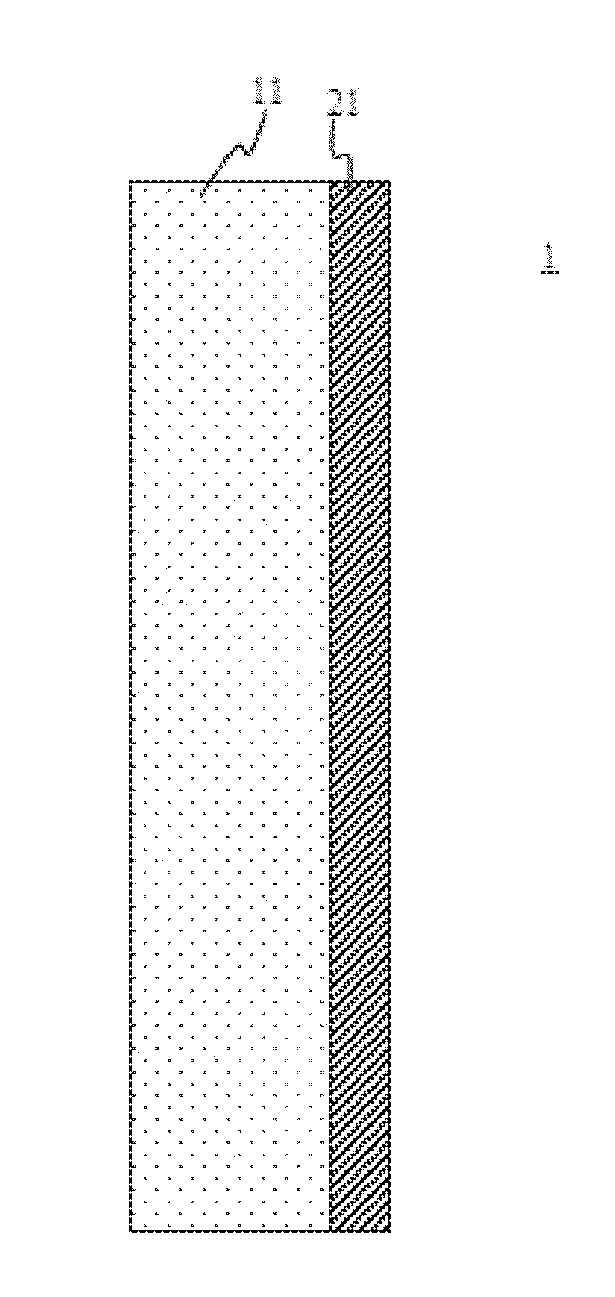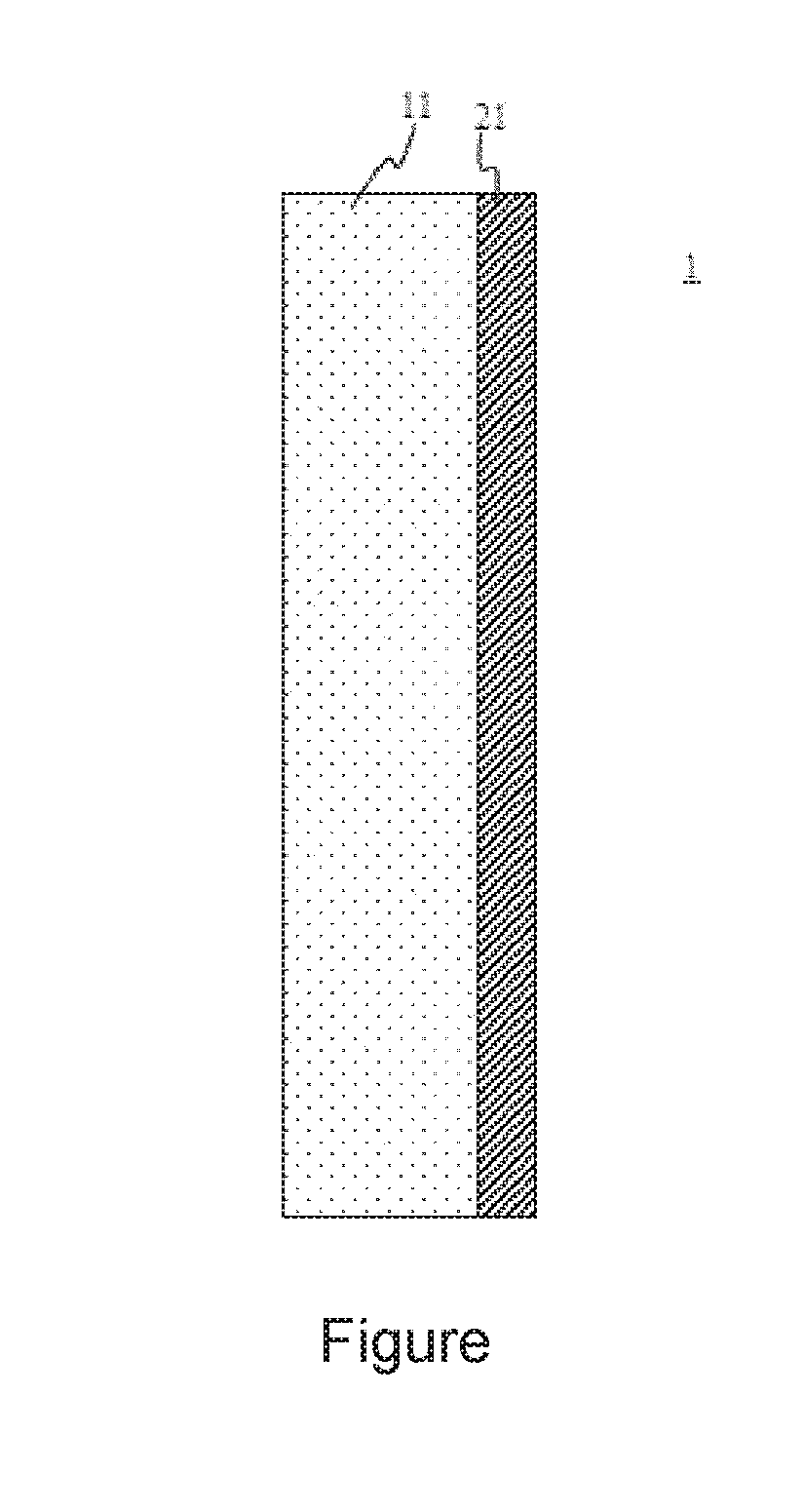However, some applications, above all those in the field of transportation, such as in aircraft manufacture and
electric vehicle manufacture,
pose requirement profiles for which until now no solutions have been demonstrated in the prior art.
In addition to this, limits with respect to the weight per unit area of such interior furnishing elements have to be observed on account of requirements from the
air travel industry.
Although panes made of a
polymer material meet the requirements placed on the weight per unit area, they do not meet the applicable
fire protection requirements.
However, an improvement in
flame protection for such
polymer panes always entails losses in terms of the transparency of such materials, as a result of which they then cannot be used for applications as viewing windows, for example.
Although known panes made of a mineral glass /
polymer laminate composite do meet the requirements placed on transparency and
thermal safety, they do not meet those placed on weight per unit area, such as, for example, composite glass panes as are known, for example, as windshields for motor vehicles or as composite
safety glass in the field of architecture.
Other mineral glass / polymer laminate composite panes, such as those described below in the listing of the prior art, do not meet the applicable
fire protection requirements.
Because panes according to the prior art do not meet the applicable specifications in aircraft manufacture, special permits of the respectively competent
air travel authorities apply there.
In
spite of this, however, such panes do not comply in any case with all of the requirements of international provisions in regard to
fire safety protection, such as, for example, those that have been established by the FAA (Federal
Aviation Administration) of the United States and imposed internationally, such as, for example, the
JAR (“Joint
Aviation Requirements”) or the CS (“Certification Specifications”) of the EASA.
Moreover, such panes do not have a scratch resistance that is comparable to that of glass, despite in part additional coatings with hard materials, such as those known in the prior art.
In order to counteract external effects, such as, for example, the danger due to
impact of a stone, however, it is necessary in this case to observe a minimum thickness of the glass
layers and, as a result of this, the weight savings are limited.
On account of the relatively thick organic layer, this composite pane does not afford any adequate
fire protection safety, such as that necessitated, for example, in the requirements for
air travel.
Here, too, a relatively thick plastic plate is proposed, which is likewise appreciably thicker than the glass layer, so that this composite pane does not meet the
thermal safety requirements, such as those demanded in the requirements for air travel, for example.
A drawback is always that the plastic layer is too thick in relation to the glass thickness.
Such panes do not meet the thermal safety requirements of air travel, at least not the requirements with respect to the “heat release rate,” because the heat release is always too high, thereby supporting fire, nor do they meet the requirements according to the “vertical burner test,” because the proportion of organics in the composite panes is too high.
Because the thickness of the plastic support material is relatively greater in comparison to the thickness of the glass
coating, this composite pane likewise does not meet the fire protection requirements, such as those stipulated in the requirements for air travel, for example.
Especially where the weight per unit area assumes a decisive role, attempts to adapt light materials to the thermal safety requirements have so far failed owing to the quality of the optical properties.
Any marked improvement in the thermal properties of polymeric materials in the direction of flame retardancy or in terms of flammability has always occurred at the expense of transparency in an unacceptable manner.
Usually, however, thermal prestressing processes are less suitable for thin glasses with a thickness of less than 1 mm or 0.5 mm.
However, in each case, the
penetration depth needs to be tuned to the
total thickness of the glass or glass-ceramic pane, since, if the tensile stress that is created in the interior of the glass or glass-ceramic pane during chemical hardening is too high, the glass or glass-ceramic pane will break.
A danger in the event of fires often ensues from the spread of
smoke in buildings, entailing the danger of
smoke poisoning for persons.
 Login to View More
Login to View More 








